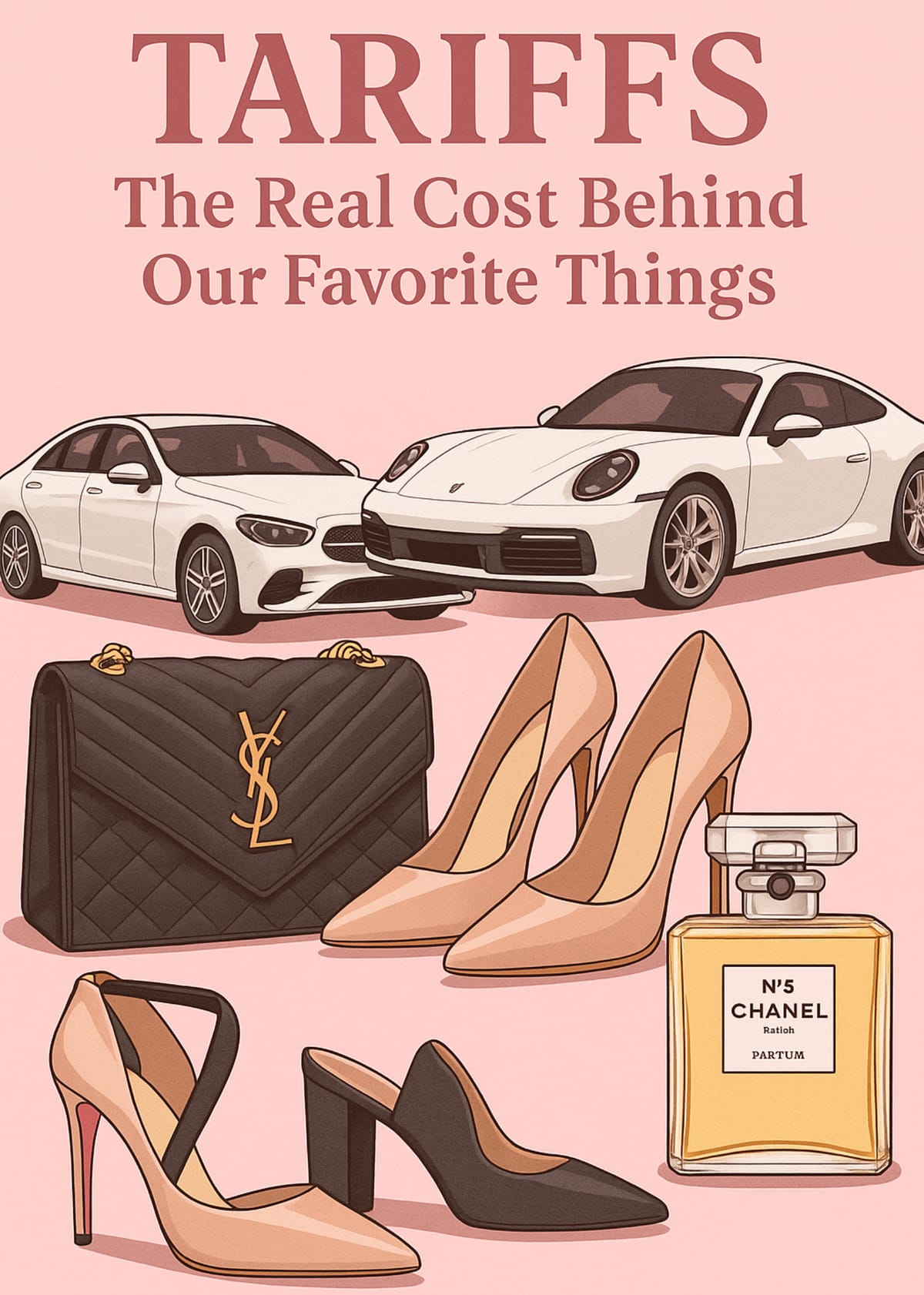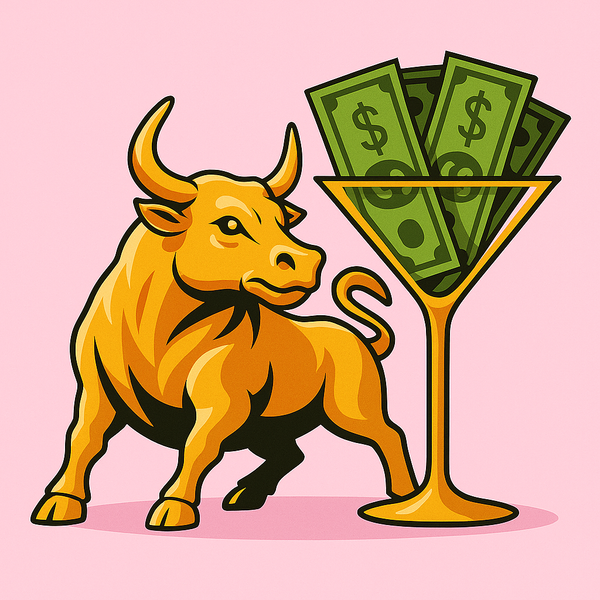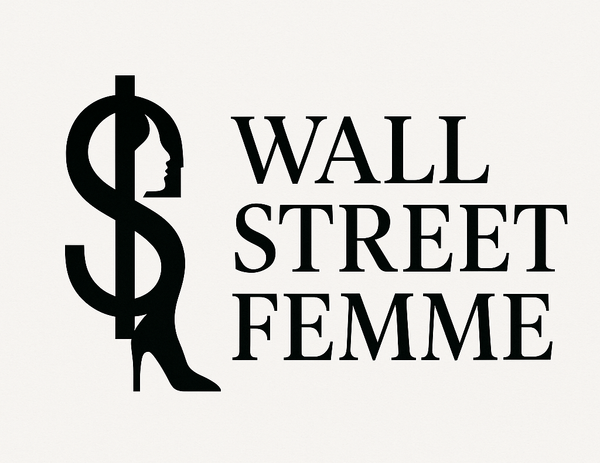Tariffs: The Real Cost Behind Our Favorite Things

What do we really need to understand about tariffs? Are they good, or bad for us? The likely answer is they are a bit of both. The news is full of stories that say we will all pay more for things, while the other side of the coin is that jobs will be created and we will all be better off.
There are 320 million living in America and we all need clothing, food, consumer goods, etc. We like trainers, iPhones, Camembert cheese and authentic German sausage. Personally, I have a strong love of French perfume, pistachios and Parma ham. But how much more will I have to pay for these things and why? Most countries that we import from have nothing like our population. Over 90% of all the clothing in our stores is imported and much of that comes from Southeast Asia—notably Vietnam. They are really good at making clothes there and their wages are much lower than ours—but don’t feel sorry, as they also pay far less for goods in their shops than we do.
So we buy loads of goods from Vietnam, and as there are just 65 million of them, they do not buy nearly as much from us. This means that for every $10 worth of goods we buy from Vietnam, they buy just $2 worth from us. This is known as a trade gap, or as we see it on the news now, an imbalance. Tariffs are supposed to make up that difference.
Why Does My Triangl Bikini Cost $360?
Americans want training shoes, but not many factories make them here, so we import them from Vietnam, where American companies have them produced. They make a pair of Nikes for $12 and export them to us by ship so they cost $20 when they reach our ports. Immediately a 50% tax (the tariff) is applied and the importer pays it to the government. Great—the government makes $10 for doing nothing, we are rich, yeah!
Well, not so much, as individuals. Once the shoes hit the stores for $50 and get sold to us for $100, the tax gets passed on to us and suddenly we’re paying $110. That extra $10 feels a little like tipping a waiter who never came by your table. It stings because you don’t see the benefit directly.
Most of the cost of goods is not tax but markup, as middlemen handle the products and pass them along at a profit. So it is possible that a $100 clothing item may have a 50% tax imposed on it, but we only see a 10% retail price increase. Don’t panic—it’ more like a 25% increase.
My favorite French perfume, however, will probably go up by about $40 a bottle—and that stings like buying a dress on sale only to realize alterations cost just as much. French perfume isn’t made in a low-cost factory, so the markup is smaller and the tax increase hits harder. Can you imagine French perfume made in America? It wouldn’t really be very French, would it? Same with French Camembert, would it taste the same if it came from Wisconsin?
The bottom line: we are creatures of habit and we don’t give up our favorites easily. Switching to US-made alternatives is unlikely.
Who’s Really Paying for All of This?
The government will make money, but really, it will be from us—unless the friendly companies that import products absorb the hit themselves. Not very likely.
Will Nike move its factories to America? If they did, that $100 item could become $150. Will we still buy it? It’s still Nike—but maybe we’d buy less often, or try other brands. Meanwhile, unemployed Vietnamese workers would be left without income. Would they return to farming or try migrating to countries with jobs?
Some Do Benefit
There are a number of companies seeing better times due to tariffs. American businesses that don’t face tariffs on their components or raw materials have become more competitive, and their models work better now—but most still need to import something.
In America, we have plenty of resources and expertise, but no silk, no lotus flowers, no German grass-fed cows, no $5-an-hour workers, no hazelnut orchards, no olive groves, no textile mills. Even Turkey imports most of its textiles from India or China because it’s too expensive to make the rolls of fabric there. Imagine producing them here—it would be like trying to sew your own Chanel jacket at home. Technically possible, but the magic wouldn’t be the same.
Apple says they’ll make products in America, but a factory takes years to build, and then we need skilled workers. Could we make German beer without German soil, climate, yeast, and water? Maybe we just stick with Budweiser, which doesn’t come with tariffs. Or an American-made perfume from Atlanta or Phoenix—though it won’t replace Chanel, Prada, or YSL anytime soon.
Lessons from the Past
In the 1970s, Britain had a big car industry, but the cars weren’t very good. Many buyers chose Japanese models—same price, better features, more reliability. The government’s response was tariffs. The result? Toyota, Honda, and Nissan built factories in Britain, but the British car industry collapsed. Today, Japanese cars are exported from Britain to Europe, though Brexit tariffs now complicate that.
So, could overseas manufacturers be tempted to return to American soil? Maybe. But don’t expect Chanel, Prada, YSL, or Moët & Chandon to relocate their craft. We’ll just pay more for them—just like we pay more for designer handbags because we’re buying the story, not just the stitching.

